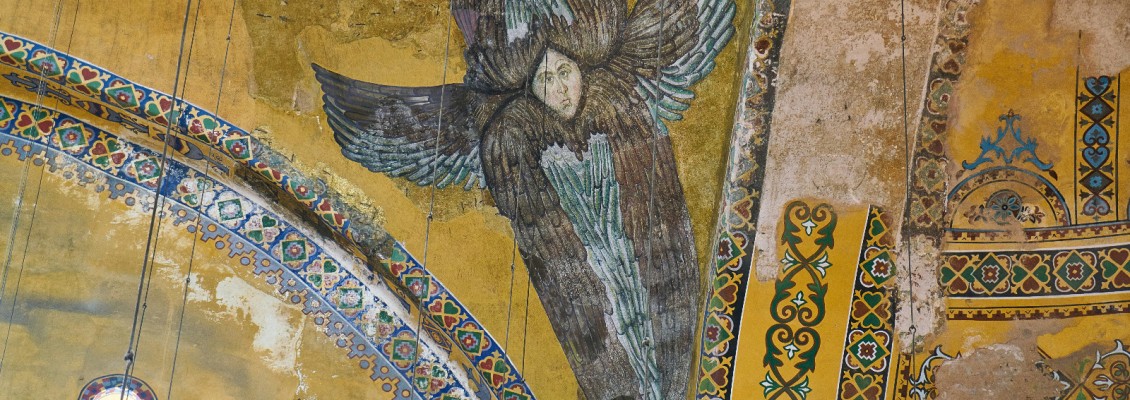
MOSAICS IN THE HAGIA SOPHIA
Emperor Alexandre Mosaic
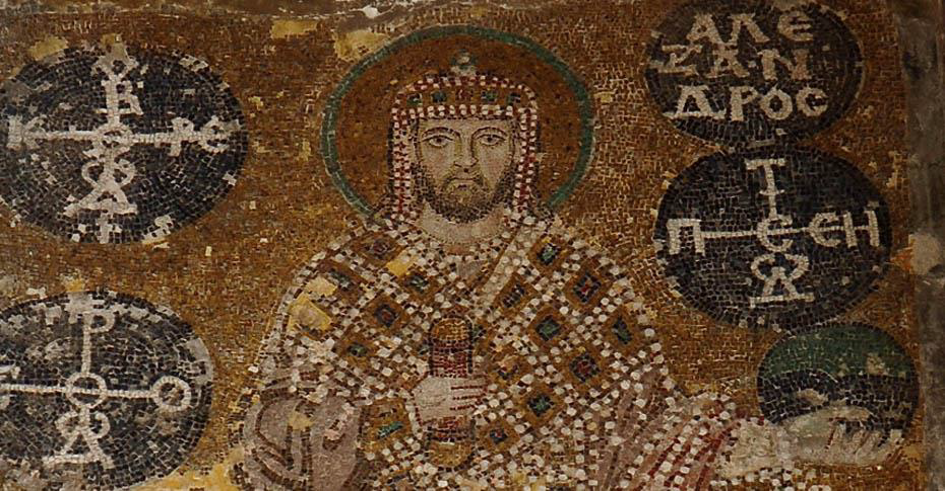
Hagia Sophia has this mosaic on the elephant foot pillar that carries the dome arch on the northern gallery. It depicts the emperor in a frontal posture while wearing the imperial crown ‘Camelaucum’ on his head. In his right-hand Alexandre holds an ‘Akakia’ which was accustomed for Byzantian emperors to carry during the ceremonies. An orb is seen to be held in his left hand completing this ceremonial depiction. The other circles are designed as medallions that have his name and titles on them. This mosaic dates to 10th century and has reached today mostly in good condition.
Apse Mosaic
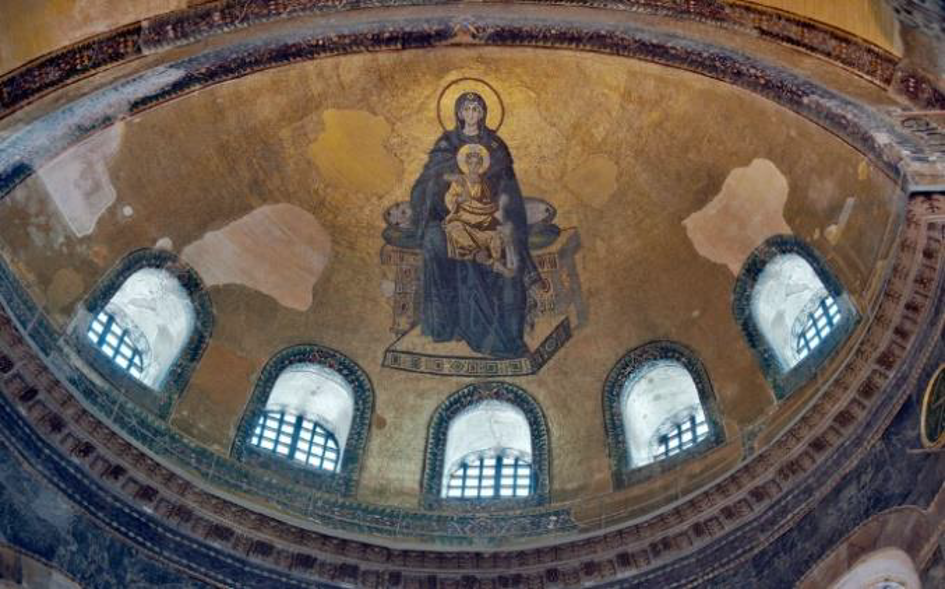
This mosaic is known to be the first depiction designed after the end of iconoclastic period of Byzantine Empire. That was a period between the years 726-843 when the religious icons and images were thought to be heretical. Followers of this belief initiated a campaign to remove icons and images from churches. Therefore, this mosaic holds additional importance as it signifies the beginning of a new period where icons were once again accepted in churches. As for the figures here, Virgin Mary is depictured reflecting her title ‘Theotokos’ (meaning God-bearer) with the infant Jesus in her arms.
Bema Mosaic
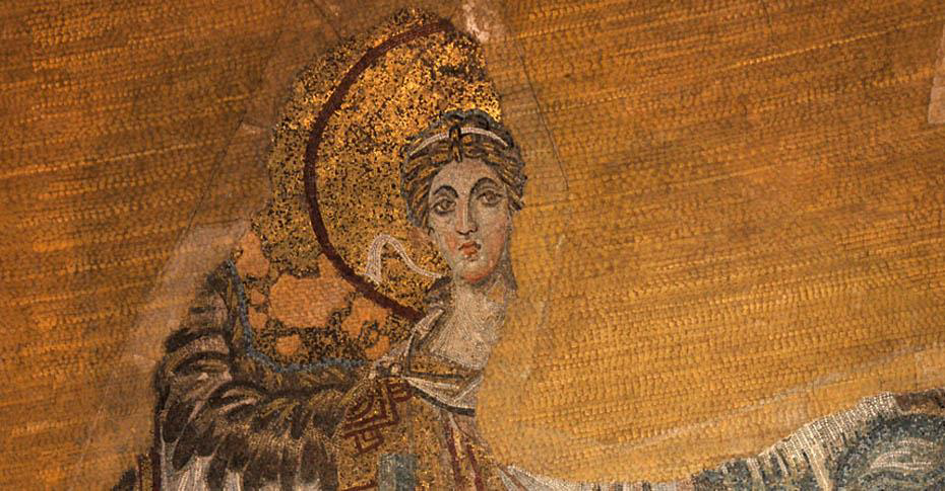
Bema is the elevated section in front of the apse in a Church and spared to the clergy’s use. Hagia Sophia had the depictions of two archangels Gabriel and Michael on the corners of the bema vault. Gabriel stood on the right corner while Michael stood on the left. Unfortunately, only a minor part of Michael’s depiction survived today.
Deësis mosaic
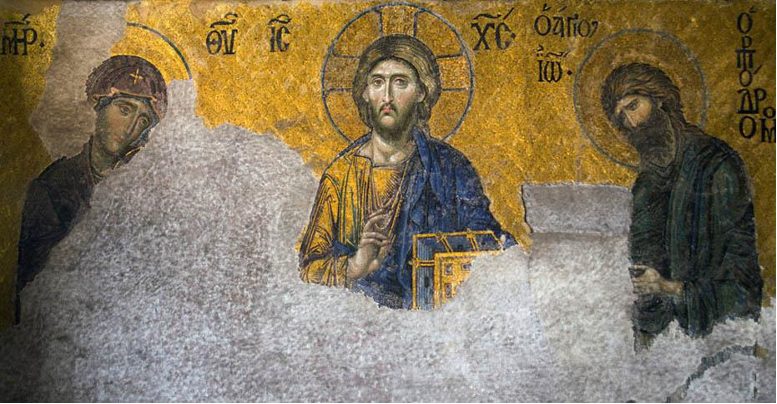
Deësis is the name of the image that places Jesus at the centre while Mary and John The Baptist are standing on his sides and bowing their heads in supplication for the salvation of human beings. The Deësis arrangement in Hagia Sophia is located on the western wall of the southern gallery. Jesus is holding the Holy Bible in his left hand and his right hand and spares his right hand to form his fingers in the benediction sign. A large part of the mosaic could not manage to survive. The strongest view about its date marks the 12th century.
Comnenus Mosaic
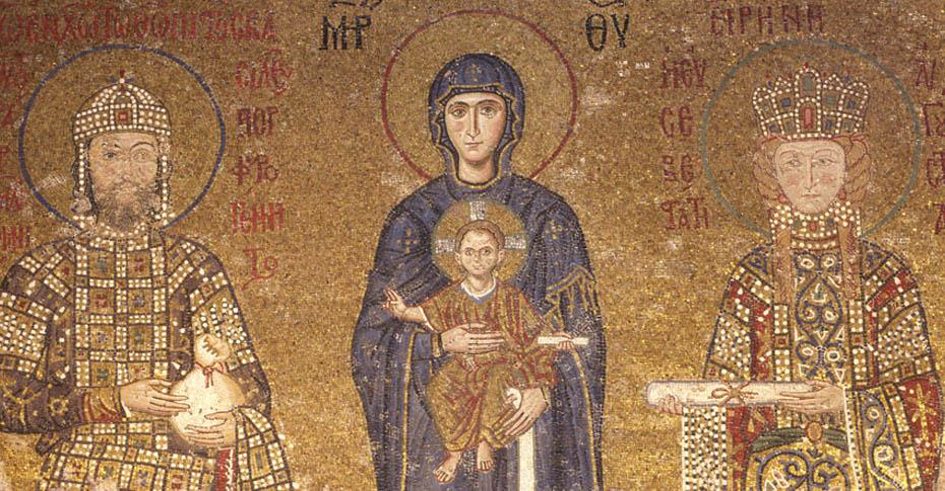
This mosaic draws an image of Virgin Mary with infant Jesus standing between Emperor John II (Ioannes II) Comnenus and his wife Empress Irene of Hungary. The imperial couple are pictured in their luxuriously designed attires while being sanctified by the infant Jesus who holds a parchment roll in his left hand. The inscription surrounding the circle around the emperor’s head reads ‘The Ruler of The Romans Porphyrogennetus Comnenus’. Another inscription written ‘Augusta Irene The Religious’ surrounds the empress’ head.
Mosaic of Leo VI

On this mosaic we see Jesus appealed by Emperor Leo VI for mercy. Leo VI took 4 wives in total and that was scandalous even at the third. The Church did not approve his marriage after the second one and notified him that it is clearly illegal for him to marry again when he did for the fourth time. However he had not had a male heir and his fourth marriage gave him what he had seeked for. Later he made his apology to The Church and this mosaic seems to refer to that event. Jesus here blesses him with his right hand and holds a parchment that reads the verses ‘May the peace be with you’ (John 20:19) and ‘I am the light of the world’ (John 8:12). The circle on the left frames Virgin Mary while the one on the right frames The Archangel Gabriel.
Seraph Mosaics

These are the most visible ones between all the depictions since they are placed on the pendentives which are triangular areas connecting the dome to the structure. According to Christian theology, they are the chiefest of the angelic beings and have six wings. Here the two of the images are fresco although their original version were designed in mosaic as well. During the Ottoman period of Hagia Sophia, their faces were hidden under golden star-shaped covers.
The Mosaic of Offering
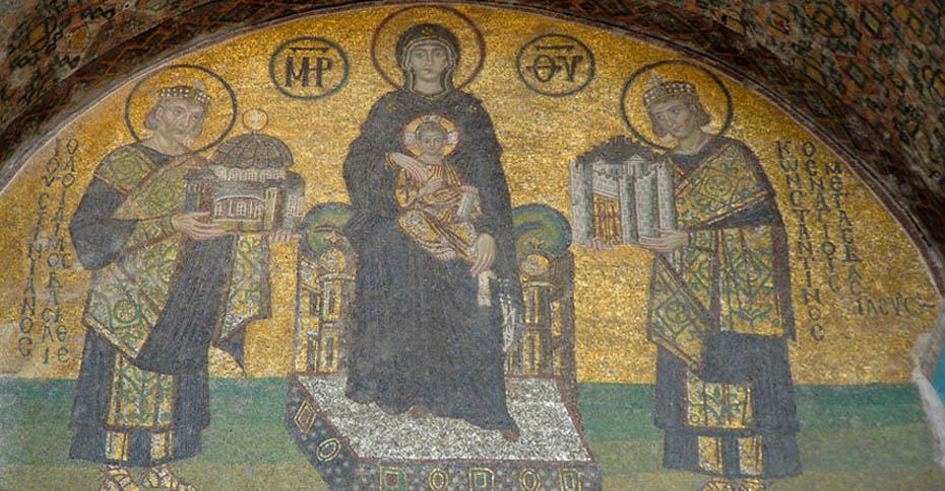
It is called the mosaic of ‘offering’ since Virgin Mary and infant Jesus here are offered models of Hagia Sophia and the senate castle of Constantinople representing the city. The Miniature Hagia Sophia offered by Justinian I on their right seems to be depicted based on the southern facade. As for the model of senate castle, it is offered by Constantine I. The medallions on both sides of Mary have the Greek acronyms that make the word ‘Mother of God’ together. Behind Constantine, we see an inscription that translates as ‘The Great Emperor Constantine of The Saints’ and the one behind Justinian says ‘Famously Remembered Emperor Justinian’.
Tympanum Mosaic

A Tympanum is a semi-circular or triangular area on the wall over a door or a gate. The Tympanum walls in Hagia Sophia originally were designed having images in a way that made a hierarchically organized set of images of archangels, prophets and saints. Mosaics that had the images of the saints are the ones placed inside the semi-arch niches. Unfortunately only 3 of these images succeeded to make it today. These are Young Ignatius, John Chrysostom and Ignatius Theophorus’ depictions. Young Ignatius was Patriarch of Constantinople twice between the years 847-858 and then the years 867-872. John Chrysostom was one of his predecessors. He served between the years 397-404 and had severe issues with the royals -with the empress in particular- that caused his exile. Ignatius Theophorus was Bishop of Antioch and a famous martyr.
Empress Zoe and Constantine IX Mosaic
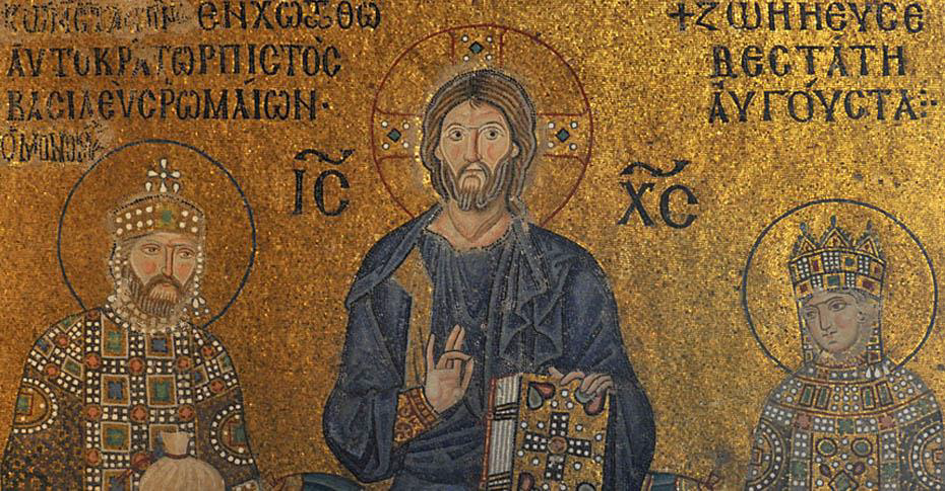
Empress Zoe inherited the Byzantian throne as the eldest heiress of the emperor Constantine VIII who did not have a male heir. Empress is known to have tied the knot three times and here on this mosaic we see her as with the last of her husbands, Constantine IX as a couple standing on both sides of Jesus. However the examinations assume that the faces in the circle were replaced with her new husband every time she got married. We see the monograms ‘IC’ and ‘XC’ which are the abbreviations for Iesous Christos (Jesus Christ) between the royals and Jesus.
Wishing Column
The columns standing at the northwest of the interior is famous with various names such as ‘lucky column’, ‘crying column’ and ‘wishing column’. Some part of the column is covered by bronze plates and in the middle of this part has a hole sized enough to have a thumb inside. The hole is said to be moist all the time and somehow attracts the visitors’ attention. It is believed that your wish comes true if you manage to rotate your hand a full tour with your thumb in the hole.
Hagia Sophia has this mosaic on the elephant foot pillar that carries the dome arch on the northern gallery. It depicts the emperor in a frontal posture while wearing the imperial crown ‘Camelaucum’ on his head. In his right-hand Alexandre holds an ‘Akakia’ which was accustomed for Byzantian emperors to carry during the ceremonies. An orb is seen to be held in his left hand completing this ceremonial depiction. The other circles are designed as medallions that have his name and titles on them. This mosaic dates to 10th century and has reached today mostly in good condition.

Leave a Comment